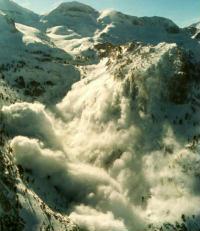In search of snowfalls
It is a time problem. When the snowfalls fall to a skier or mountaineer must be searched quickly. You may be about not to be hurt, drowned, or frozen by the blow. Normally, if it is not in half an hour, it is in danger of dying.

Due to the expansion of skiing, last year the record in US resorts of the number of skiers killed by falling snow was broken. According to the Cyberspace Snow and Avalanche Center in Corvallis, there were 33 deaths in 23 accidents. In addition, the huge snowfalls in the Chamonix valley caused the death of many people, who are not the only examples.
Much work is being done on relief systems. "Screaming and signaling is not the best way to do a quick search," says researcher Rush Robinett. They say that on many occasions those of the track search service have that search. Researchers from the Sandia National Laboratory of Robinett and Energy have developed another type of research. They basically want to use computers in the process. In his opinion, the search for computer skiers is a process similar to locating chemical or biological attacks.
Strategy solution
The laboratory had developed a computer program that coordinates the set of small robots that explored in search of sources of biological contamination. Now they want to use this program to search for underwater people. For this you can use robots or minicomputers, radio equipment and people with GPS.
The ‘Distribution Optimization’ algorithm is used in computer simulations carried out in the Sandia laboratory. The result is that avalanche victims have been found four times faster than previously achieved by means. According to Robinett, "this is a result under basic conditions." When the situation is more complex, when the snow layer is very deep or when stones and trees make it difficult to search, for example, the algorithm written by Sandia laboratories is even faster.
Due to the snowfalls, skiers from various territories carry radio beacons. However, systems to locate them are not usually very advanced. The usual system is usually the tracking of each meter, but it is a work that takes too much time. In addition, this system forces the seeker to turn at right angle whenever the signal weakens. Search processes are difficult, as underwater objects change the signal and, in addition, the direction to the place of issue is not known.
"Take three steps south to better follow." Robinett says. "Carrying the radio, GPS equipment and small computers makes it possible to broadcast such messages." It is preparing to patent and publish new search algorithms. A couple of videos have been shot to show how robot sets work. Companies wishing to obtain authorization to use the avalanche algorithm are requested to contact the Sandia Laboratory Department of Technology and Permits.
Buletina
Bidali zure helbide elektronikoa eta jaso asteroko buletina zure sarrera-ontzian











